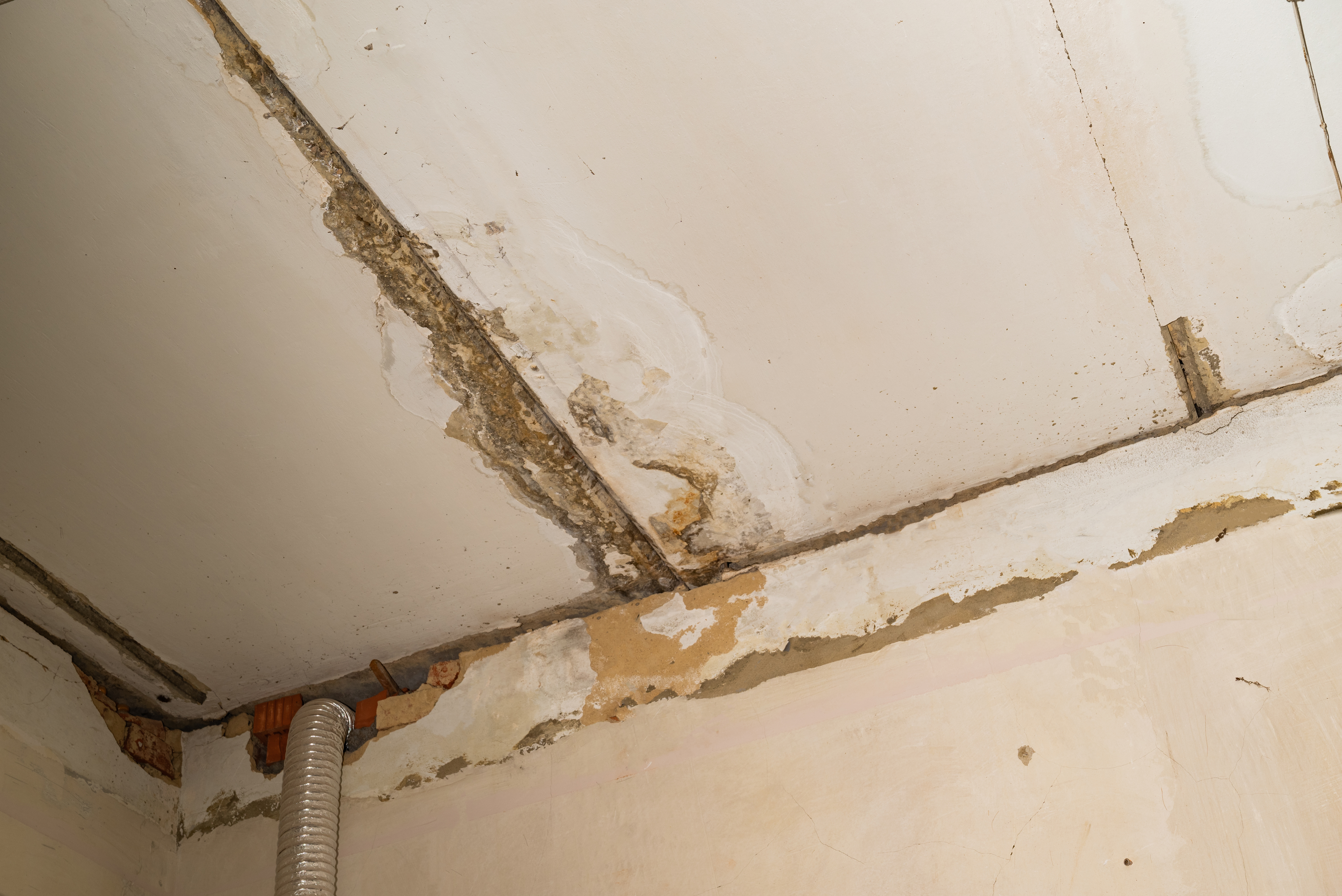
Preventing Mould In Our Homes: An Urgent Matter
Mould – its a huge problem for safety and maintenance within all sectors of social housing. Due to the potential it has to cause costly damages and potential liabilities that can occur if unreported and left untreated, finding quick and efficient solutions is non-negotiable.
The risk of mould growth is unsurprisingly amplified further by the potential consequences it can have for both residential and employee health. It can grow almost anywhere, from damp basements to poorly ventilated areas, and once it takes hold, it spreads quickly - releasing harmful spores that affects both structural integrity and health for both those living within.
As winter approaches, the necessity to tackle these conditions has become significantly more important. Just a few years ago, a life was tragically taken here in Greater Manchester as a result of continued negligence in tackling reports of damp and mould in a social housing property. Equally shocking is the report of over 1,000 cases of mould growth submitted to Glasgow City Council, whilst further cases have arisen to councils in Lewisham, Sheffield, and Yorkshire - all in the last year alone.
The private sector was also asked to provide information on damp and mould on a voluntary basis – but only 33% of those surveyed responded. The results varied, concluding an estimate of anywhere between 0-27% of properties could be affected by damp or mould across the nation.
Urgent action needs to be taken to prevent these conditions from becoming the new normal, as the risk posed will inevitably cause damage to properties and put wellbeing into dangerous territory.
The importance of mould prevention within homes
The potential health risks associated with mould exposure include respiratory issues, allergies, serious infections - and in the most extreme cases can result in fatalities.
Additionally, there are huge financial consequences that mould infestations can have on businesses, such as property damage, loss of inventory, and increased insurance premiums. By understanding the significance of mould prevention, the need for proactive measures should be taken to protect your portfolios and promote positive health for homes, workers and residents alike.
Signs of mould growth within our homes
Understanding early signs of intrusion and the common causes of mould within businesses is essential for developing effective prevention strategies. One of the primary causes for mould growth is excessive moisture or water intrusion. Leaks from pipes, roofs, or windows will create the ideal environment for mould growth, which will only become worse when left unaddressed for an extended period.
Humidity levels in homes will also contribute to mould growth. High humidity provides the ideal conditions for mould spores to germinate. It's therefore important to monitor and control humidity levels within properties to prevent mould from taking hold. Additionally, inadequate insulation can lead to condensation, which will also promote mould growth on walls, ceilings, and most notably – around windows, which are costly jobs in themselves.
Furthermore, unreported or unaddressed maintenance will almost certainly contribute to mould growth, and further damage to property. Neglecting regular servicing or failing to address water damage promptly can create an environment where mould thrives throughout the property.
Once understanding your properties with precise data, providing the relevant information to your residents is key to getting the best out of our properties. Lack of awareness and education about mould prevention among tenants can also lead to or fail to address behaviours that inadvertently promote mould growth.
By identifying and addressing these common causes, you can take proactive measures to prevent mould growth and safeguard your business.
The structural risks associated with mould exposure
All cases of mould infestation will eventually cause significant issues, no matter how small. One implication of untreated conditions is the result of significant property damage. Damp environments cause it to thrive, and if not treated, it can spread rapidly throughout the premises.
Persistent mould growth will lead to the deterioration of building structures and assets within them, including damage to walls, windows, furniture, doors and carpets which will result in the loss and replacement of expensive assets within. Poorly ventilated areas, such as bathrooms and basements, are prone to mould growth due to the accumulation of moisture and lack of ventilation to eradicate it.
The cost of repairs and replacements can be substantial and can take a long time, putting a strain on your resources, and turnover.
Claims from ignored cases can result in increased insurance premiums and potential coverage issues. Insurance companies may view mould-related claims as a high-risk factor and may either raise premiums or exclude mould-related damages from coverage altogether.
This can leave your portfolio vulnerable to inadequate conditions and financial strains in the event of mould-related incidents. By prioritizing mould prevention, you can mitigate these risks and protect your financial stability.
Further consequences of mould growth in British homes
Mould exposure can have produce a range of adverse health effects, making prevention a top priority. The spores released by mould can cause respiratory issues, such as coughing and wheezing. For individuals with pre-existing respiratory conditions, such as asthma, mould exposure can exacerbate symptoms and lead to severe health problems – or worse.
The climate in the UK is already ideal for mould growth due to high levels of humidity. But here in the north of England, northern weather also exposes homes to extended periods of wet and colder weather - risking the potential conditions for mould to become out of control. This coinciding with lower levels of funding has led to a higher concentration of mould reports within homes. Failure to act upon these reports can include fines and legal action, which has previously led to public inquiries - as in the case of Rochdale Borough Housing over the death of toddler Awabb Ishak, back in December 2020.
Steps for preventing mould growth in your business
Intervening over detections of mould is therefore crucial for early prevention. Knowing the signs to look out for can help you identify potential mould infestations promptly. Some common signs of mould in the property include:
- Visible mould growth: Mould often appears as fuzzy patches or discolouration on walls, ceilings, or other surfaces. It can be black, green, brown, or even white in colour.
- Musty odour: Mould releases volatile organic compounds (VOCs) that produce a distinct musty smell. If you notice an unpleasant odour in housing or your workplace, it could indicate hidden mould growth.
- Allergic reactions: If employees or residents experience unexplained allergic symptoms, such as nasal congestion, sneezing, or skin rashes, it could be signs of mould presence. In this occurrence, there is a risk of legal proceedings that could end up taking place.
- Water stains or discolouration: Water stains on walls, ceilings, or floors can indicate a history of water damage, which is an ideal breeding ground for mould.
- Peeling or bubbling paint: Moisture from mould growth can cause paint to peel or bubble, especially in areas with high humidity.
If you observe any of these signs, it's crucial to take immediate action to prevent further mould growth in the future and address the underlying causes.
The role of condensation and humidity solutions in preventing mould
Preventing mould growth in your business requires a proactive approach and thorough checks. By implementing regular monitoring, the risk of mould infestations can be reduced:
- 1. Control humidity levels: Smart monitoring can alert businesses when humidity exceeds 60% to inhibit mould growth. Use humidity monitoring solutions in areas prone to high humidity prevents the risk of mould breeding or spreading.
- Address water leaks and moisture promptly: Any signs of water intrusion or leaks can be detected immediately through humidity monitoring. The detection of excessive moisture can indicate leaky pipes, roofs, or windows, so you can take the correct course of action to prevent any chance mould growth.
- Educate tenants about mould prevention: Raise awareness about the importance of mould prevention and provide tenants with best practice information and guidelines to report any signs of mould or water damage.
By implementing condensation and humidity monitoring as an effective solution, you can significantly reduce the risk of mould growth and create a healthy and safe environment for everyone involved
Best practices for maintaining mould-free environments
Once areas of weakness have been identified via remote monitoring, action such as installing proper ventilation and implementing humidity control will play a vital role in mould prevention. Regular monitoring of humidity levels can ensure that the atmosphere is consistently below 60% humidity. By identifying potentially dangerous conditions, you can adjust to provide adequate airflow and begin to accurately control moisture levels, creating a safe environment.
When conditions exceed acceptable levels, the implementation of ventilation systems, such as exhaust fans and HVAC systems, will help remove excess moisture and improve circulation.
Controlling humidity levels is the utmost important factor in mould prevention. High humidity creates an ideal environment for mould growth, promoting spore germination. Regular data that identifies overly humid conditions will allow maintenance to be conducted before properties are damaged, and wellbeing is put at risk. You can consistently monitor conditions to be sure these solutions are consistently working and identify any future issues that crop up.
While implementing preventive measures on your own is important, engaging in proven modern technologies will provide additional benefits, whilst promoting residential safety. By implementing effective solutions such as monitoring systems, you have the expertise and correct equipment to thoroughly assess your premises for potential mould risks and produce effective results in prevention.
One of the key benefits of these systems is their ability to identify mould-prone conditions early. They can also perform air quality testing to determine the presence of mould spores and assess the overall indoor air quality; including CO2 - which is also hazardous.
The use of IoT systems can also provide a variety of solutions tailored to the specific needs of your business. They can develop comprehensive mould prevention plans, helping you address mould risks quicker and more effectively, minimising the potential for mould-related issues in the future.
Furthermore, reliance of these systems can provide a true peace of mind. Knowing that your business is in the hands of experts who understand the complexities of mould prevention can alleviate stress and allow you to focus on running your business effectively.
Need a quick solution? Book a demo and say goodbye to your damp, mould and condensation problems – it’s as simple as that.







